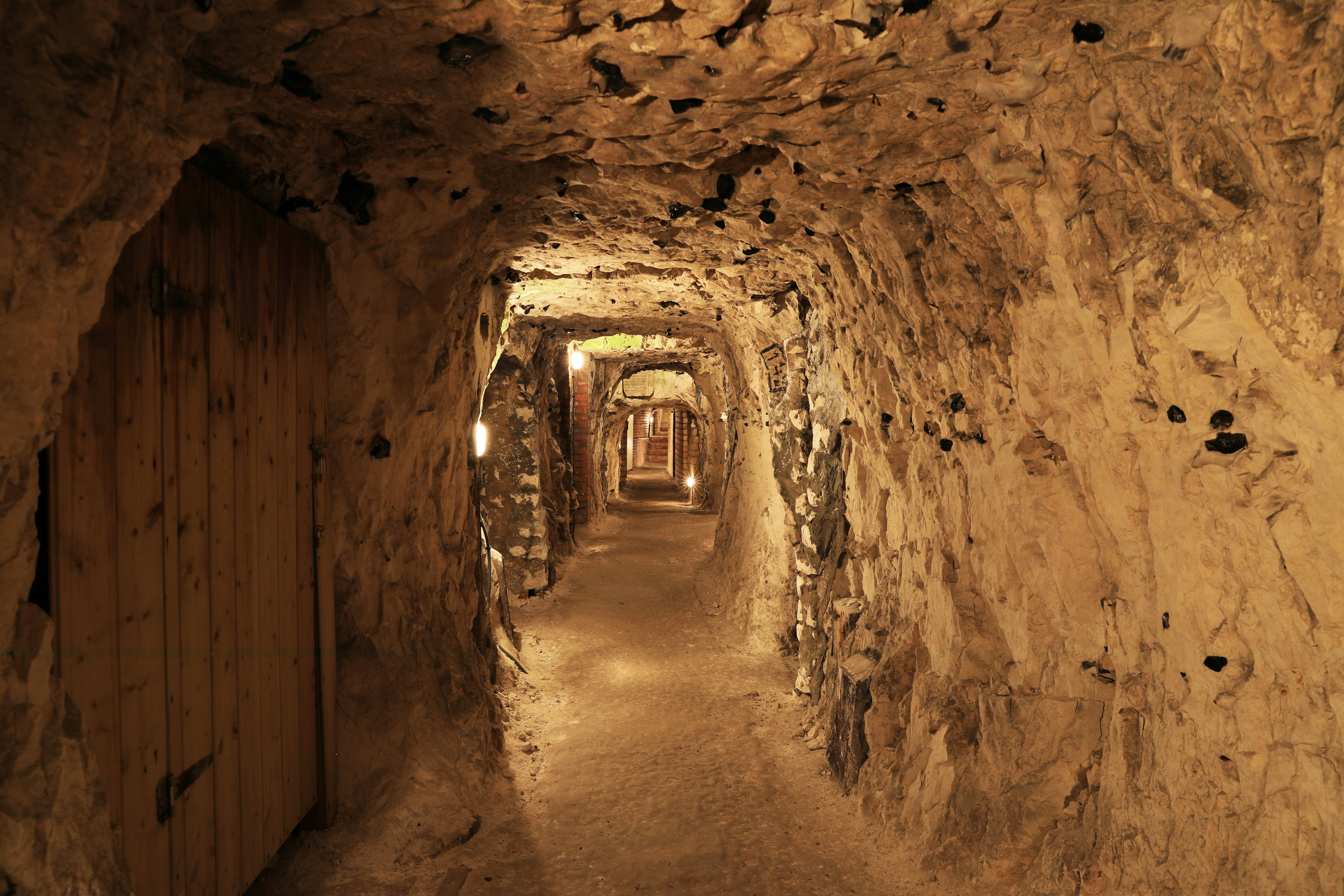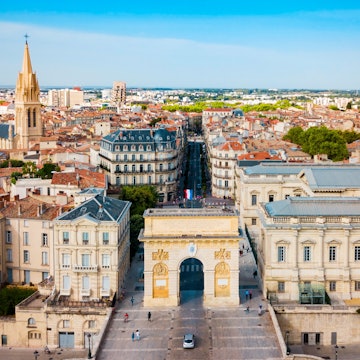

An early morning of view Candes-St-Martin and the Loire River, France. Adrian Lewandowski/Shutterstock
If you’ve ever doubted the old saw that good things come in small packages, spend some time in the villages of France.
The French people certainly treasure these hamlets – so much so that a TV series, Le village préféré des Français, asks viewers to pick the most beautiful burg in the country. It’s been a hit for more than a dozen seasons running.
With literally thousands of potential candidates, formulating my own slate is no easy task. Nonetheless, I hope you’ll consider my short list of nominees of my own most-preferred villages in France.
Voting will close once you’ve visited them all.
1. Candes-St-Martin, Indre-et-Loire, Centre–Val de Loire
Best for languid days by the water
Nougat-colored yet punctuated with vibrant, flower-filled window boxes, the village of Candes-St-Martin sits at the convergence of the Vienne and Loire Rivers. While there are péniche river boat trips to take, vintages at waterside wineries to taste and a 12th-century church to visit, the best thing to do here is flop into the shallow waters of the Loire, or hire a kayak from upriver to drift back to base.

2. Grignan, Drôme, Auvergne-Rhône-Alpes
Best for lavender landscapes
A candidate for the 2024 edition of Le village préféré des Français, Grignan ultimately lost out to seaside Collioure. But who needs the ocean when, from the vantagepoint of the 12th-century castle, a sea of purple spills out in all directions? Lavender is the glorious reason to visit this village and the surrounding Drôme region, with the crop flowering from mid-June to mid-July.
Planning tip: Exactly when the lavender blooms and is cut can vary year on year. Check Les Routes de la Lavande for the most up-to-date information.
3. Manigod, Haute-Savoie, Auvergne-Rhône-Alpes
Best for winter sports and summer hikes
Many ski towns turn into ghost towns out of season. But not Manigod. True, a fresh coat of snow makes for ideal conditions on the slopes of La Clusaz (the resort of which Manigod is a part), or for snowshoeing hikes that begin in the village center. Yet come summer, these same mountains transform into an epic flower show. All year round, Lo Garâjo, a concept cafe and event space in a converted garage, keeps residents entertained with everything from jazz quartets to yoga brunches.

4. Camaret-sur-Mer, Finistère, Brittany
Best for channeling your inner artist
It seems only natural that untameable and utterly bewitching Camaret-sur-Mer would attract artistes. Attached by a narrow strip of land to the rest of Finistère, on the western tip of Brittany, the Crozon Peninsula is a mass of granite boulders, purple heather and a coastline more knotted than a banyan tree. The village itself has views of an ever-changing sea and sky. When the sun shines, its streets become an open-air gallery; when the clouds roll quickly in, resident artists hastily retreat to paint gray scenes seen through rain-stained windows.
Planning tip: Follow the coast path to Pointe de Pen-Hir to see rocky islets that pepper the sea like splinters.

5. Viviers, Ardèche, Auvergne-Rhône-Alpes
Best for stepping back in time
A trip to this Rhône-side village will take you back to the Renaissance. Cobbled streets dart in and out of archways, leading to the crown-like cathedral at the top of the village. This elaborate structure dates back to the 4th century CE, though most of the present structure is from the 12th. Perhaps accordingly, medieval reenactments are all the rage here, and many residents proudly display photos of their pantaloons and velvet breeches in the windows of their homes.
Planning tip: For a weekend each September, Viviers hosts a Renaissance festival, featuring archery, storytelling and flag throwing.
6. Arles-sur-Tech, Pyrénées-Orientales, Occitania
Best for weird and wonderful traditions
In the foothills of the Pyrenees, this former mining village is Catalan first, French second. In the shadow of Mt Canigou, it’s a hot spot of myth and legends – none more curious than the one celebrated at the annual Catalan Bear Festival. Each February, Arles-sur-Tech and its neighbors Prats-de-Mollo-la-Preste and St-Laurent-de-Cerdans trade off hosting this event, where for several days straight, villagers chase a monstrous-looking “bear” that has allegedly kidnapped a local girl; eat copious amounts of meat and quaff copious amounts of wine; and wear down their vigatanes (espadrilles) dancing to a combla (Catalan orchestra). Impromptu combla concerts are common occurrences all year long.

7. Naours, Somme, Hauts-de-France
Best for underground exploration
Naours is pretty enough above ground – but it’s what lies underneath that earns the village a spot on our list. Dug by hand, a vast network of chalk quarries – some 300 chambers in total – provides a subterranean adventure straight out of your favorite childhood adventure novel. The historic region of Picardy has seen many wars over the centuries, and from the Middle Ages up until the 17th century locals used this labyrinth to hide from intruders.
8. La Malène, Lozère, Occitania
Best for activities for all ages
The 1000m (3280ft) cliffs that flank the River Tarn are so impenetrable that the road down to La Malène has more turns than a carousel ride. At the bottom, the views are just as dizzying, the sky seemingly so far away it’s as if you were looking through an inverted telescope. An adventure playground, the river itself was made for kayaking, paddle boarding, canyoning and white-water rafting, while the gorges provide a climbing wall of infinite possibility.

9. Fleurie, Rhône, Auvergne-Rhône-Alpes
Best for wine (whether at the château or on the go)
It didn’t begin with wine snobs scorning Beaujolais Nouveau. In the 14th century, the dukes of Burgundy, sensing a rival to their own vintages, banned the gamay grape, the bedrock of Beaujolais wines. It’s only now that the region’s wines are beginning to regain credibility. Beaujolais today encompasses 10 crus (wine appellations) – and Fleurie wins for views. With a toothpick church spire poking up among sweeping vineyards, houses the color of melted butter and countless châteaux (go for a tasting at Château de Poncié), this is a village that tickles all the senses. It’s also the starting point for the legendary annual Beaujolais Wine Marathon.
Planning tip: The wine marathon – with both a full route and 13k option – sells out several months in advance, so book early.
















